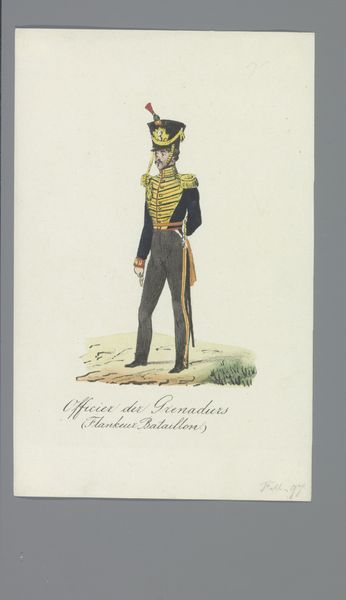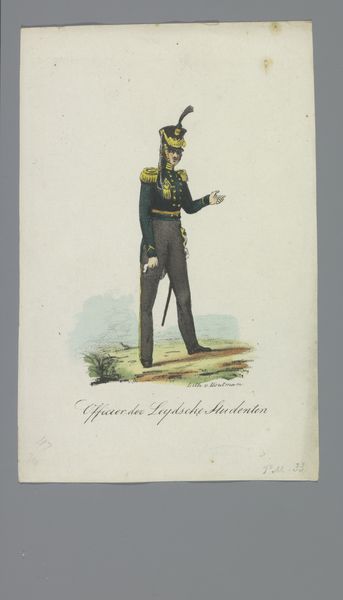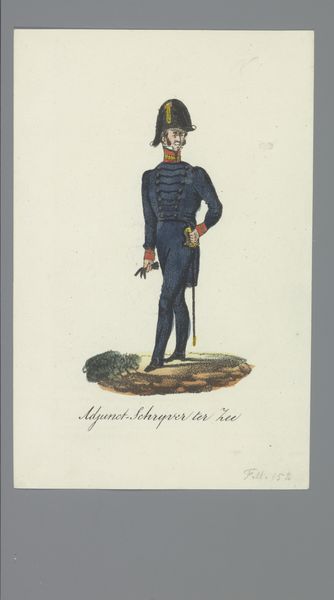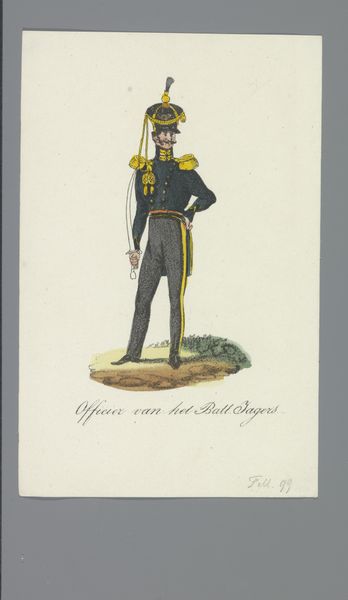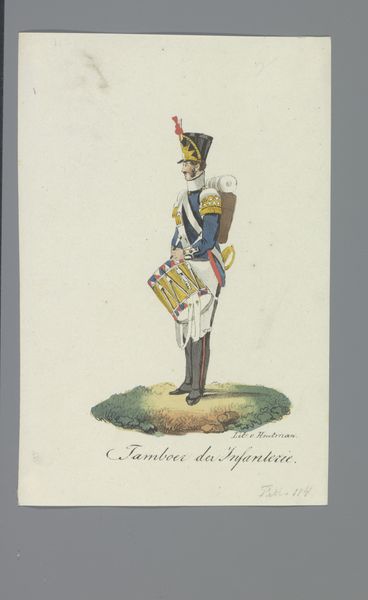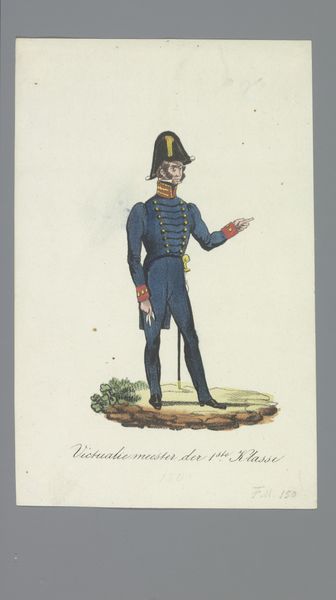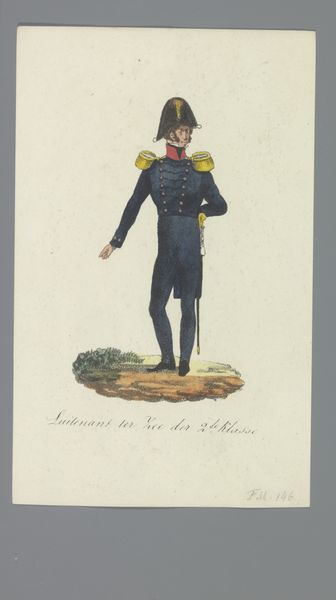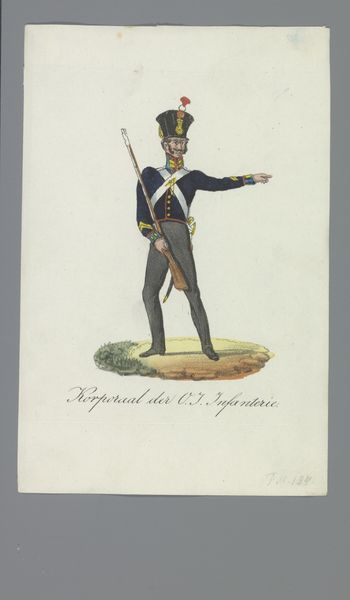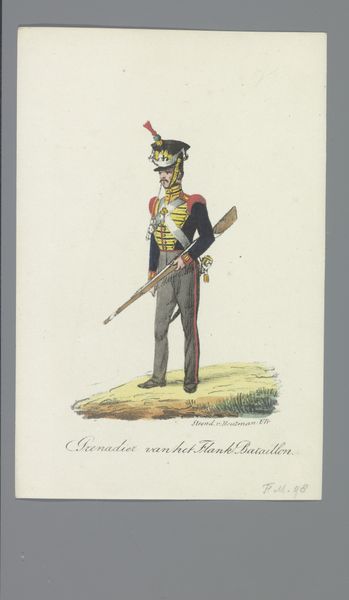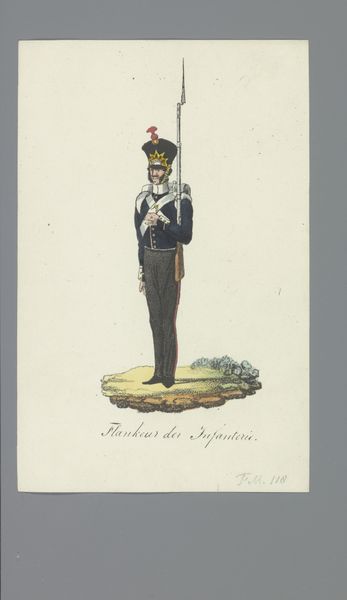
drawing, watercolor
#
portrait
#
drawing
#
watercolor
#
romanticism
#
costume
#
watercolour illustration
#
genre-painting
#
academic-art
#
watercolor
Dimensions: height 170 mm, width 110 mm
Copyright: Rijks Museum: Open Domain
Editor: This is Albertus Verhoesen’s *Officier der Grenadiers*, a watercolor drawing done sometime between 1835 and 1850. I'm immediately drawn to the detail in the uniform, especially the bright yellow trim. What can you tell me about it? Curator: From a materialist perspective, consider the context: watercolors like this, reproduced as prints, played a crucial role in disseminating ideas of nationhood and military power. It's not just an image of an officer, but a piece of carefully constructed propaganda meant for a wide circulation. Editor: Propaganda, really? Because of its wide reach, or because it idealized the officer? Curator: Both! Think about the production of this image. Watercolors allowed for relatively quick reproduction. Then consider how prints would then become accessible visual tools utilized by the rising bourgeoisie and new recruits alike. What is consumed, how, and by whom? Those are central questions here. And consider the labour: whose hands prepared the pigments? Who printed and distributed the images? It opens up an investigation of the material and social conditions in this "portrait." Editor: So, it’s less about the individual officer and more about what his image *does*. Are you saying that even his flamboyant costume served a specific function within that system of production and consumption? Curator: Precisely! Every thread, every brushstroke contributed to a broader political project: manufacturing consent and legitimizing state power in this historical moment. It's not just pretty colors, but carefully deployed materials used to solidify control. How do we reckon with the costs and labor involved? Editor: That is fascinating. I’ll definitely think of artworks like this in a new way going forward - it definitely isn't just about the finished product, it's about all the inputs that go into making it! Curator: Exactly! By analyzing these historical mechanisms, we reveal not only the material means, but how those informed production values and contribute even to the artwork's enduring social power.
Comments
No comments
Be the first to comment and join the conversation on the ultimate creative platform.
